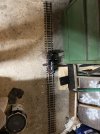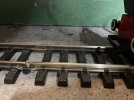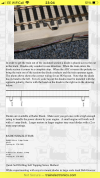No idea what has happened but I have come back into the garage to compare my setup with the LGB instructions and seen that I am set up the same.Pedant-mode:
A voltage of 12V..-Sorry,it just grates..
The unit could be faulty?
The problem with checking with a meter (without a load) is that a voltmeter is a very high resistance, so you need very little current to 'see' a voltage.
Despite it not having anything to set the delay times, I think it should be wired the same way as the filly-featured LGB unit.
Follow the breadcrumbs, to the LGB instructions:
Your controller is replacing the little unit they supply.
PhilP
Decided to turn power on to check for the 100th time and the train happily trundled along the length of track!
Maybe a funny connection or dirty contact who knows!?
So next question is what rating of diode would I need I believe I’ve seen 3A mentioned a few times whilst I’ve been scouring the internet?





